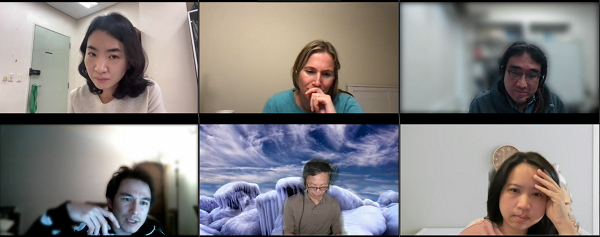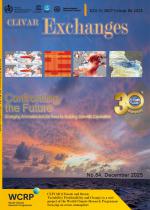CDP Telecon Session #2 organized in April 2023

On 19th April 2023, the CLIVAR Climate Dynamics Panel (CDP) organized its Telecon Session #2, with the participation of Sarah Kang, Natalie Burls, Aixue Hu, Bolan Gan, Rhys Parfitt, Yoshi Sasaki from CDP and Jing Li from ICPO. This session was mainly focused more on the mid-latitude air-sea interactions, with a short discussion at the beginning for the upcoming CDP-6 meeting in Trieste, Italy. Pre-recorded presentations were prepared by three CDP members and shared with the group prior to the meeting. All members were supposed to review the recordings in advance, and bring their questions in the telecon for discussions.
At the beginning of the telecon, a brief discussion on the timing, content, and logistic issue of CDP-6 were conducted. The CDP-6 will be a half-day meeting on 11th August 2023, right after the summer school and workshop.
A comprehensive discussion over the three talks on mid-latitude air-sea interaction followed, with the major uptakes summarized below:
- Mid-latitude ocean influence on mid-latitude climate (Rhys Parfitt, Florida sta. Uni.) | Recording
- A lot of time-mean characteristics/fields in the mid-latitudes can be basically explained by the variability of atmospheric fronts/weather systems (synoptic timescale).
- Western Boundary Currents (WBCs) have a deep imprint in the upper troposphere in the time-mean fields (and many of these influences are set through atmospheric fronts).
- The fine-scale SST gradient can directly force atmospheric fronts, which is important for general storm development and the time-mean fields. It is noted that the fine-scale SST gradient spatially matches the cross-atmospheric frontal scale.
- We need at least 1/4 degree, and usually 1/10 degree or better resolution to resolve the associated mid-latitude air-sea interaction.
- Successful extra-tropical transition of Tropical Cyclones (TCs) and the duration of the transition over the Gulf Stream is statistically linked to the fine-scale SST gradients in the week leading up to TC passage. This is related to atmospheric frontal variability.
- It is still a challenge to reconcile the longer-term mechanisms with the shorter ones, which is a big gap in our current understanding of mid-latitude dynamics.
- Importance of ocean eddies and storms to climate variability (Bolan Gan, OUC) | Recording
- Eddies could generate/affect lower atmosphere through vertical momentum mixing, while the pressure adjustment mechanism could also contribute to the deeper/enhancement of the vertical motion in the upper atmosphere. The dominance of these two mechanisms may depend on the ocean eddy imprint in the atmosphere as well as the background winds. However, almost all of the rainfalls come from weather system and move through, but neither of the two mechanisms can be applied to the individual weather system. It is key to understand on how to bridge the time scales in the mid-latitudes, and how these two mechanisms can be reconciled with the individual weather system.
- Kuroshio extension in the North Pacific has far-reaching impacts, and even the remote impact on the Gulf Stream. While the vice versa may be also possible via atmospheric teleconnections.
- The stability of Kuroshio Extension is mainly driven by wind stress curl changes over the subtropical gyre, rather than thermohaline changes.
- Mid-latitude air-sea interaction (Yoshinori Sasaki, Hokkaido Uni.) | Recording
- The current study only checked the influence of SST changes on the future rainfall trend. Further studies will check the influence of tropical cyclones, upper layer jet and etc. changes.











Add new comment